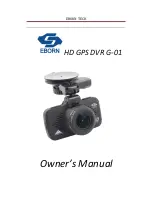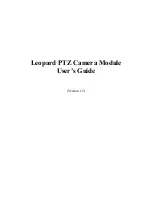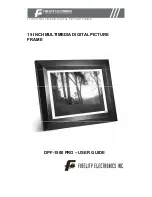
The interchangeable lenses for these camera models with a built-in focal plane shutter do not have their own shutters. They are fitted
(except the 250-mm. lens) with a pre-select iris. This allows presetting of the aperture at which you want to work. You then focus at
full aperture for maximum image brightness on the reflex screen (and minimum depth of focus for highest focusing accuracy). On
flicking the aperture lever as far as it will go, the iris closes down to the preselected stop; you do not even have to take your eye from
the screen. The lenses are fitted with depth of field indicators. The nearest focusing range of all lenses can be extended with extension
tubes and the extension bellows ( ** ). All lenses accept series VII filter glasses which fit the front ring of the lens and are held in
position by a retaining ring.
THE 60-mm. DISTAGON f 5.6 is a wide-angle lens of six elements, with an angle of view of 65 degrees. It focuses from 20 in. to
infinity, and carries aperture settings from f 5.6 to f 22.
THE 80-mm. EKTAR f 2.8, the standard lens of the earlier models, has four elements. Its angle of view is 51 degrees and the focusing
range from 20 in. to infinity. The lens is recessed so that no lens hood is needed.
THE 80-mm. ZEISS TESSAR f 2.8, the standard lens of the later models of Hasselblad 1000F has the same specification as the Ektar
above. The lens is recessed so that no lens hood is needed.
THE 135-mm. ZEISS SONNAR f 3.5 is a universal long-focus lens for distant shots. It yields a linear magnification of 1 2/3 times
compared with the standard lens. The angle of view is 32 degrees and the focusing range from 40 in. to infinity. It accepts a series VII
lens hood.
THE 135-mm. EKTAR f 3.5 is similar to the 135-mm. Sonnar in application and performance.
THE 250-mm. ZEISS SONNAR f 2.6 has the same construction, specification and performance as the same lens for Hasselblad 500C. It
takes, however, series IX filters with retaining ring. A lens hood is supplied with lens.
A 250-mm. ZEISS SONNAR f 4 was available for a limited time. The overall optical performance at wide apertures is not quite equal to
that of the f 5.6 model. This lens uses the special Zeiss filters, which are placed between the lens and the lens hood. The latter comes
with the lens.
The Super Wide-angle Lens
The 38-mm. BIOGON f4.5 forms part of the Hasselblad Super Wide camera. It can in a way be considered as a lens unit usable with
the magazines and other attachments of the Hasselblad system.
Changing the 1000F and 1600F Lenses
The lenses are fitted with a quick change mount.
To remove the lens, hold the milled ring at the base of the lens with your right hand. Press the lens lock release on the bottom corner
on the right of the camera front and turn the lens by a third of a turn anti-clockwise as far as it will go. The lens can now be lifted
away.
To attach the lens, line up the red dot on the rear rim of the lens mount with the red dot on the top of the lens flange on the camera
body. Turn the lens clockwise until the lens lock clicks into position.
Lens Hoods
The lens hood protects the lens from light coming from outside actual picture area. Without a hood, light from objects outside the
actual picture area reaches the lens and reduces the picture brilliance. This applies not only to photographs taken against the light-
when the lens hood becomes indispensable-but to sunshine in general, as well as to pictures in diffused light and indoors.
THE LENS HOODS FOR THE HASSELBLAD 500C lenses of focal length from 80 to 250 mm. carry a bayonet fitting to fit the bayonet
front of the lens mount. Special models are made for the Biogon 38-mm. and Distagon 50-mm. lenses. They screw directly on to the
lenses and take Hasselblad series 63 filters.
A professional model in the form of a square bellows extending to about 4 in. (100-mm.) also screws directly into these lenses. For
use on the 80- to 250-mm. lenses an adapter ring is included.
THE LENS HOODS FOR THE HASSELBLAD 1600F AND 1000F The standard 80-mm. lens is recessed in its mount, so that the front acts
as a lens hood. The square standard series VII hoods can, however, be added for maximum efficiency. For other lenses the size of lens
hood required is given with the details for each lens.
Filter Attachments
Filters for black-and-white and colour photography, a polarizing filter and diffusion disc are available. The size required is indicated
with the description of each lens.
LENS CHANGING
www.mr-alvandi.com
Содержание 1000 F
Страница 18: ...WILD LIFE www mr alvandi com ...
Страница 52: ...THE CUT FILM ADAPTOR www mr alvandi com ...
Страница 54: ...Daylight Exposure Values www mr alvandi com ...
Страница 55: ...Filters for Black and White Film www mr alvandi com ...
Страница 57: ...Colour Temperatures and Light Sources Light Balancing Filter Data Filter Equivalents www mr alvandi com ...
Страница 59: ...Close Ranges with 50 60 mm Distagon and Planar 80 mm www mr alvandi com ...
Страница 60: ...Close Ranges with 120mm S PLANAR 150 200 mm SONNAR www mr alvandi com ...
Страница 61: ...Focusing Ranges with the Extension Bellows Shutter Speeds to Arrest Movement www mr alvandi com ...
Страница 62: ...Conversion of Film Speed Systems Colour Films www mr alvandi com ...
Страница 63: ...Black and White Films www mr alvandi com ...
Страница 64: ...www mr alvandi com ...
















































